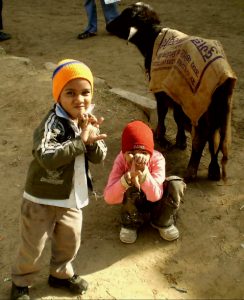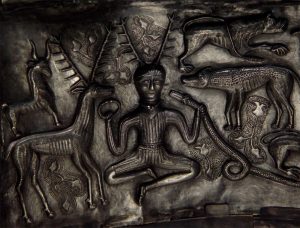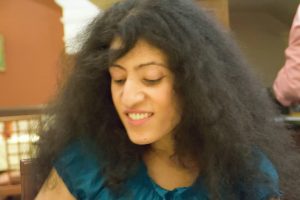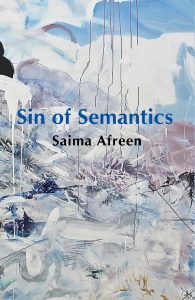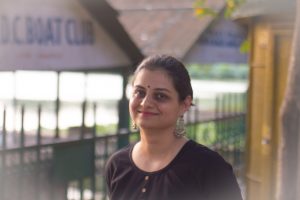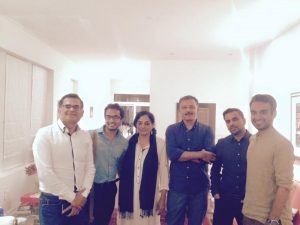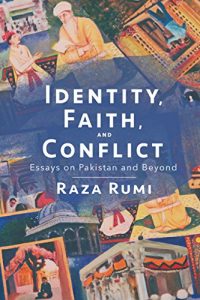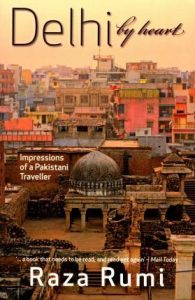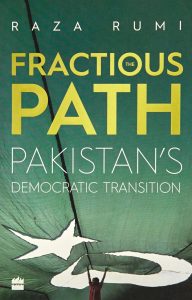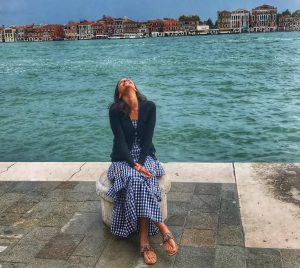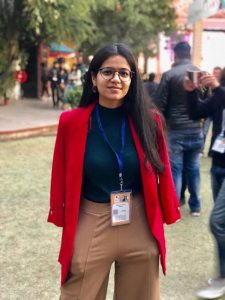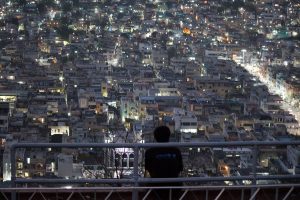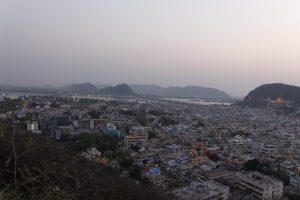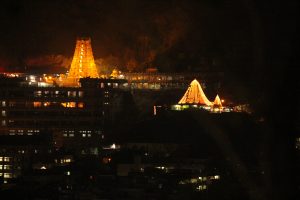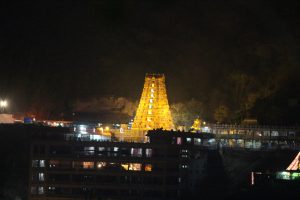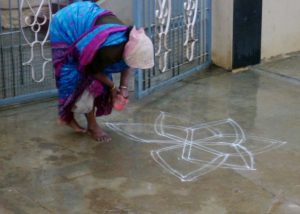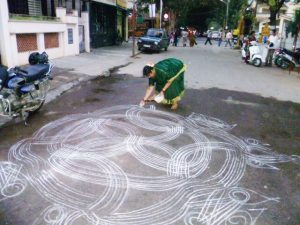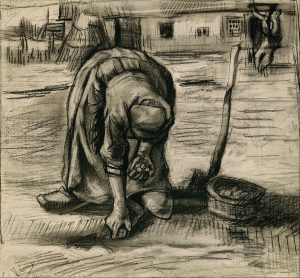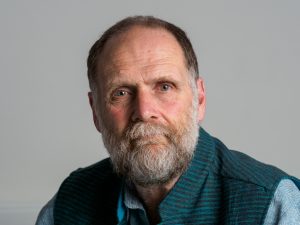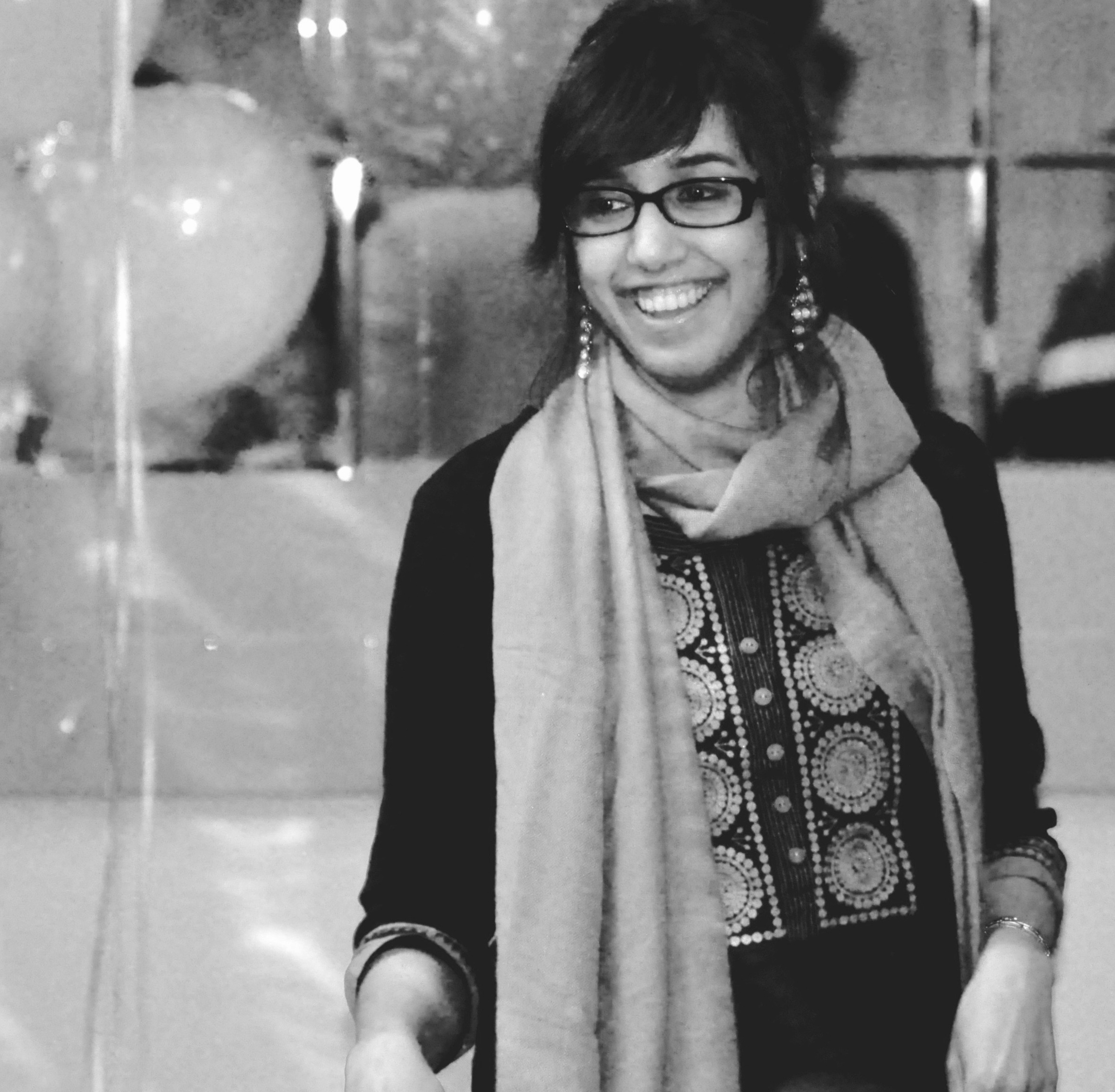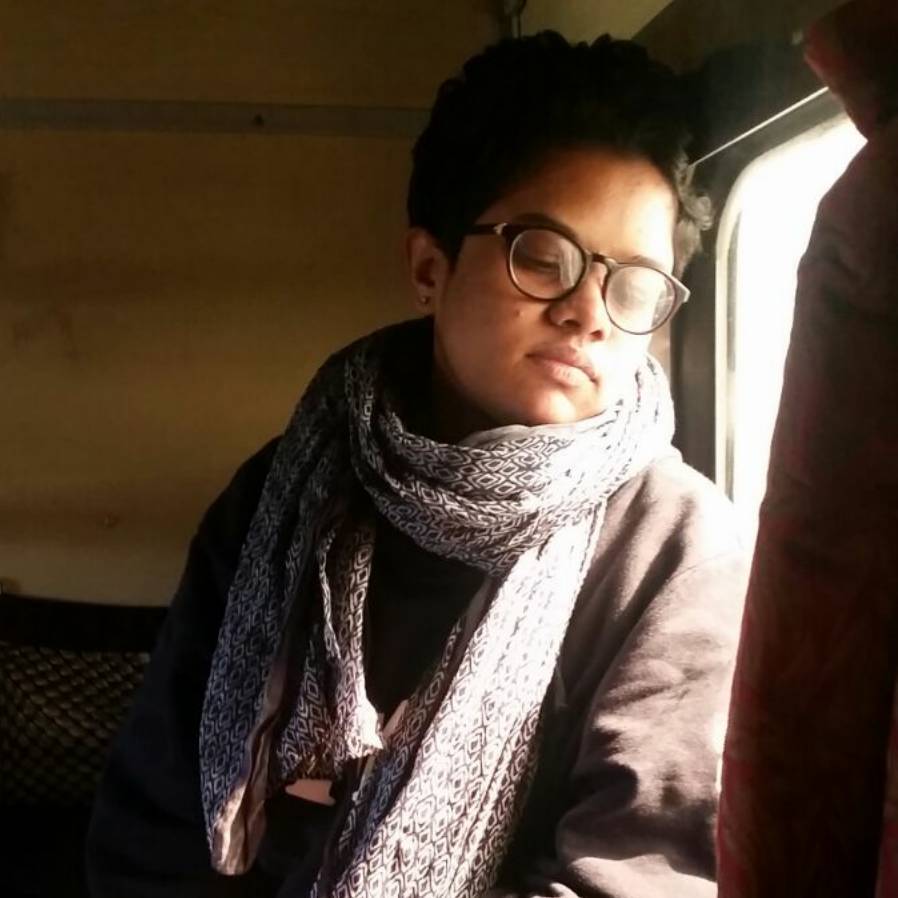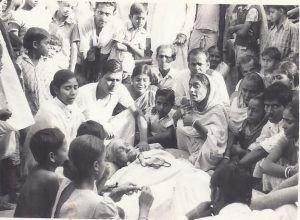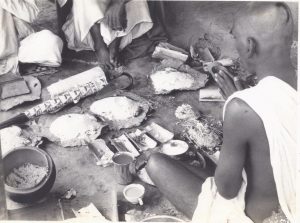Interview with Wanphrang Diengdoh
Interview by Sneha Krishnan
‘Lorni – The Flaneur’ is a noir detective thriller, with overtones of mystery, urbanism and conflict. It revolves around Shem (Adil Hussain), an out of work, self-styled detective with a sharp sense of the streets of small town Shillong who is asked to investigate the disappearance of cultural artefacts from a rich and wealthy household in the neighbourhood. Navigating narrow streets and dark alleys, Shem embarks on an emotional and mental journey reflective of his present reality, a painful past interwoven with the tapestry of Shillong. Shillong, capital of Meghalaya in North-East India, hosts diverse multi-cultural identities which has also resulted in tensions and conflicts over the years. Like the quintessential flaneur, Shem manoeuvres reality as it unfolds, while being haunted by his loss in the past, navigating a complex interplay of the personal, the political and the emotional narratives. This film takes you on a journey, while also alluding to important conversations on ethnonationalism and cultural and ethnic identities central to the politics in the region. Shem himself is a dkhar – half Khasi, an indigenous tribe and half from somewhere else. Shem is addressed as shi-piah, a derogatory term for someone who is born from a tribal parent and a non-tribal parent.
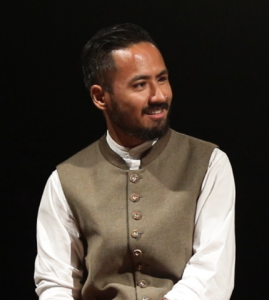
Director Wanphrang Diengdoh. Photo credit Pratyush Satpathy.
The film screened at the 11th Indian Film Festival in Bhubaneshwar (IFFB) in January 2020 and was recently part of New York Indian Film Festival in August 2020. It was also screened at Pimedate Ööde filmifestival and Talinn Film Festival in December 2019. This is the first full length fiction feature film that Wanphrang has directed. The other films were non-fictional: ‘Where the Clouds End (2014)’ documents the Khasis’ struggle to claim an authentic ethnicity, racial purity and right to land. It challenges stereotypical notions portrayed by the media of the unwanted ‘outsider’ who threatens traditions, social structures and moral values, while ‘Because We Did Not Choose’ (2017) looked at the First World War and the involvement of indigenous labour communities in war efforts in Shillong and northeast. His other films have also revolved around questions of identity and belonging.
Your debut feature film, Lorni asked some valid questions about identities. It strikes a delicate balance in its portrayal of a combination of political issues in Shillong, the corrosion of folk traditions and heritage, along with the personal and emotional journeys of the people who lived there for years. How did you find a thread to connect everything?
The one common link throughout the course of the film was Shillong. That’s the landscape, premise and the bedrock of the entire film. Having grown up here and lived outside for a long time, perhaps I notice these subtle differences and transitions much more evidently. Lorni attempts to explore this cultural and geographical landscape of Shillong – how the city is and the lives of people – without taking a moral stance on the events and the people’s actions. It’s an understanding and a knowledge that has stemmed from the documentary films that I have indulged in so far as well as the countless hours of interactions with family here and the people around me.
This film was originally conceived in the form of a graphic novel you wrote 10 years ago. How did you decide to make it into a feature film?
I had just finished my Masters from Jamia at that time, and obviously one is not always blessed to start work on their own film right after they finish film school. But I had these ideas in my head. I sketched them and they took the shape of a graphic novel. That idea eventually got shelved because I got involved in the documentary form, which I love doing. That took centerstage for the longest time. It was only after I finished my documentary film ‘Because We Did Not Choose’ (2017) on the First World War and participation of indigenous labourers from the Northeast, that I told myself I want to take a break from the documentary form. I had spent 4 years researching and filming the subject matter and I was given a book deal at the end of it. I declined the offer. There were a lot of ideas for a fiction project I had in mind. Lorni felt quite appropriate at that point of time and was the most appealing. I felt this would be a story that will be relevant in today’s times and needed to be told.
What are some of the works that inspire you? Have films always been your calling?
My foray into films was through music. The other corridor, or entry point were the family stories and folktales my grandmother used to tell me. They served as a portal into the past, and into another universe. As a child with an impressionable mind it caught my imagination and stayed with me. The joy of these folktales is that depending on which point of time in our lives we look into them they resonate differently. That’s the beauty of the folk, this fluidity and this refusal to be confined and bound by meaning or even time and space for that matter. Indeed, these stories can romanticize a past or herald the pastoral but some of them are also quite critical of the environments that they are situated in. Whatever the case maybe, they spark off a certain part of my imagination that fuels a lot of my creative work. Back in the day when my grandparents narrated them to me, we didn’t have cable tv and the national broadcaster was really limited in terms of relevant content that they aired for us in the north-east. It was only in the 90s, when cable TV arrived that media consumption became a big industry. Eventually, there was a shift, the center of the conversations was no longer the fireplace or the hearth. We now sat glued watching whatever was shown on the screen.
Another inspiration as I mentioned is also the musical tradition of the Khasis. Similarly, this folk form refuses to confine itself in a time and space and over the years has seen a huge revival after the missionaries deemed it barbaric. I only studied film much later in life, but I was always tuned into the happenings of where I come from, which is evident from the films, music, poetry and installations that form my body of work.
The sound of your film speaks to this medium of oral stories. How much of these rich cultural oral traditions does your film reflect?
There is a multiplicity and a pluralism in opinions and stories of these spaces. That’s the joy of these oral traditions. When you go about documenting it to try and find the most authentic version, it ceases to become liberating, the process then becomes a sort of an antithesis to these traditions. This constant search of authenticity means that these ideas which in essence are very fluid enter a realm that attempts to make them rigid.
At one point of time, the photography and documentation by the colonial gaze of subjects in these spaces was obviously that of anthropological delight. What I noticed over the passage of time and have also addressed in my work and research is that even the indigenous persons themselves have resorted to a gaze, which is also very colonial. The same subjects are now presenting themselves as touristic or exotic and further romanticize or fetishize their indigeneity. So, I find it interesting how the insiders continuously create their own myths and sometime reassert a colonial stereotype. These are some of the issues one deals with while watching Lorni, as reality gets presented or recreated differently for the characters in the film.
You are also a sound artist, you have a music project Ñion, how did you retain these influences in your film?
I have always been fascinated by how psychoacoustics connect or alter emotions and your perceptions of a situation. Music makes us react in a very similar way. I try to incorporate this use of sound to express the mood and sentiment that the scene requires – the things that you do not see on the screen but make you feel and respond in a certain way. For some sequences I did not even direct Adil in the conventional sense. I made sure he listened to a piece of music for a while and then took the shot after the music was over. I wouldn’t say he was hypnotized but it has more to do with putting a person in a certain state of being. In the film, the character he plays has also internalized the happenings in the town over the 30-40 years. I remember while we were conducting the acting workshops, a curfew was imposed in Shillong for a few days. The streets were dead quiet and it was reminiscent of the troubled days when we were growing up. Adil walked back to his hotel by himself one evening just for him to also internalize the sounds that are also part of the city’s aural landscape. In fact, most of the music or the songs I do, are also snippets of everyday realities that one would come across here in town. I like to imagine that they sometimes function as repositories of a time and space that once was.
What kind of challenges did you face amongst curfews and clashes in Shillong while you were shooting? How did you overcome these?
I had a ready script; everything was well thought of and well planned. We were shooting guerilla so it was imperative for us, that the first take should be the only take and the best. This was the case in most instances when we were filming outside. If we had to have multiple takes, it was very obvious that we would have a crowd gathered around which would just make things counterproductive for all of us. Thankfully, we did not have any curfews during the shoot.
Do share about your main leads. How did Adil Hussain come about playing the lead role? Even the femme fatale is played by your cousin Dawiat Syiem, who is making her debut. How was the experience of working with them?
I was keen on casting an entire set of local actors who had never acted before, so I had an audition. Meghalaya has a really small nascent film industry and there isn’t a theatre or an acting scene either. I wanted a fresh set of faces that looked a certain way and also ones that could really speak for themselves without needing to say much. I wanted to make a film which was reflective of people’s everyday realities with absolutely relatable characters. I wanted people in Shillong to watch the film and say “Hey, I know someone just like that.” I managed to find a really good set of actors in Shillong but sadly could not find the face for the lead actor as yet. In fact, even Dawiat’s role in the film was not finalized until much later because the actor who was supposed to play the part had to leave the country at the last minute. In other words, I had the entire cast and extras sorted except for the lead roles. I was getting a little anxious because the shoot dates were approaching. In the meantime, I reached out to Adil to conduct an acting workshop. I met him briefly in Delhi and he agreed to do the workshop. It was a wonderful meeting and he asked me if I could send him the screenplay so he could go through it before coming to Shillong. I didn’t hear from him for a long time and told myself that he’s probably shelved the idea. Eventually, I got a call from him about a week later and he said he wanted to play the lead in the film.
Dawiat is a PhD scholar from Jawaharlal Nehru University (JNU) in New Delhi, and she happened to be in town around that time. I asked her if she would be keen to come for the workshop. I remember her walking in the first morning to the workshop space. For a fraction of a second, I saw her and Adil together in the film. I knew she would fit the part instantly. We carried on with the workshops and slowly noticed the confidence, the presence and the grace which the film would require from her. She did an absolutely fantastic job and I don’t think anyone else could have played the part so well.
Can you describe your role and sensibilities in today’s socio-political times? There is an anti-Citizenship movement across India and the stance for people in the northeast is particularly interesting. What’s your position in these ideologies?
When we were growing up in Shillong, we witnessed several clashes between various ethnic communities that lived here. This meant that our society was extremely polarized. And when you are that age, you ask yourself and others a lot of questions, which perhaps were never answered at that point of time. These experiences and encounters and the atmosphere that nourishes them firmly inform your works and your politics. When I went to study at Jamia Milia Islamia University in Delhi, I witnessed and experienced things as an outsider now. I was a minority within a minority, but this also allowed me to understand the politics of belonging, race, identity at a very participatory level. I encountered racism and abuse but that also goes into strengthening one’s artistic and political sensibilities. I vividly remember the media witch hunt that occurred during the Batla House encounter and the fear and paranoia that gripped the area. It’s scary and upsetting to imagine that this is the everyday reality for a lot of people there. The last place I lived while I was in Delhi was at an Afghan refugee neighbourhood which was also quite an interesting experience altogether.
I’ve soaked up all these experiences and complexities which I now choose to address through my art. I try to not put myself in the usual checkbox categories of left, right, liberal because in an era of political co-opting and correctness, we are quite aware of how problematic these positions are.
But yes we are living in a time where we are constantly demanded to prove our love and desire for this country. That proof has to come through the religion that you need to practice, the food habits that you should subscribe to and a certain kind of consciousness that seeks to demonize others who do not subscribe to your ideas. Here in the North-East, it is even more complex taking into consideration the national and international borders, the trans-national communities and societies that exist and the importance of clinging onto your indigenous identity first before any other concept of nationhood. And then of course that does not mean that everything that is indigenous is also ideal and progressive. But yes, to cut a long conversation short, I find this political and fascists climate hugely distressing. Perhaps, these are times when the insurrectionary capacity of art should be put to the test.
What next? Is there any project you are working on currently?
I am currently filming my next piece amidst all this corona madness. It’s rather different from the subjects that I usually deal with. But filming has been challenging because of the numerous health and safety regulations one needs to keep in mind. I am also involved in some music work related to this project which is a nice break because it allows me to take time off from filming project yet still address the concept through music.
Thanks for your time.
![]()
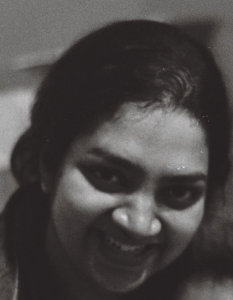
Dr. Sneha Krishnan (b.1987) trained to be a researcher in the interstices of development, health and disasters. One day she grew tired of the world of research that converted people’s life stories into data and evidence, and instead dived deep into the world of telling stories with prose, poetry and photographs. Her poetry, essays and stories have been published in The Conversation, Helter Skelter, Belongg, Medium and The Wire. She also organises the Indian Film Festival of Bhubaneswar (IFFB) and Indian Documentary Film Festival of Bhubaneswar (IDFFB). She has a PhD in Environment Engineering from University College London and Professor of Environmental Studies at Jindal Global University

